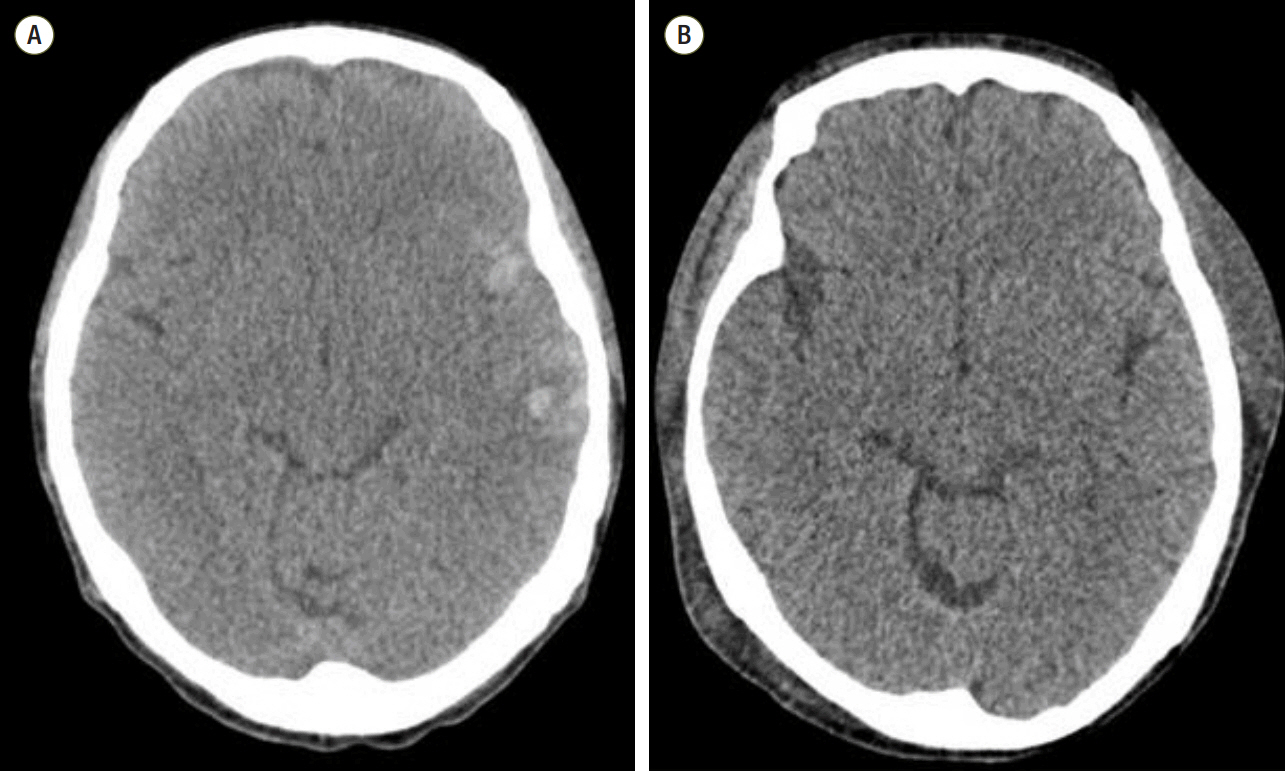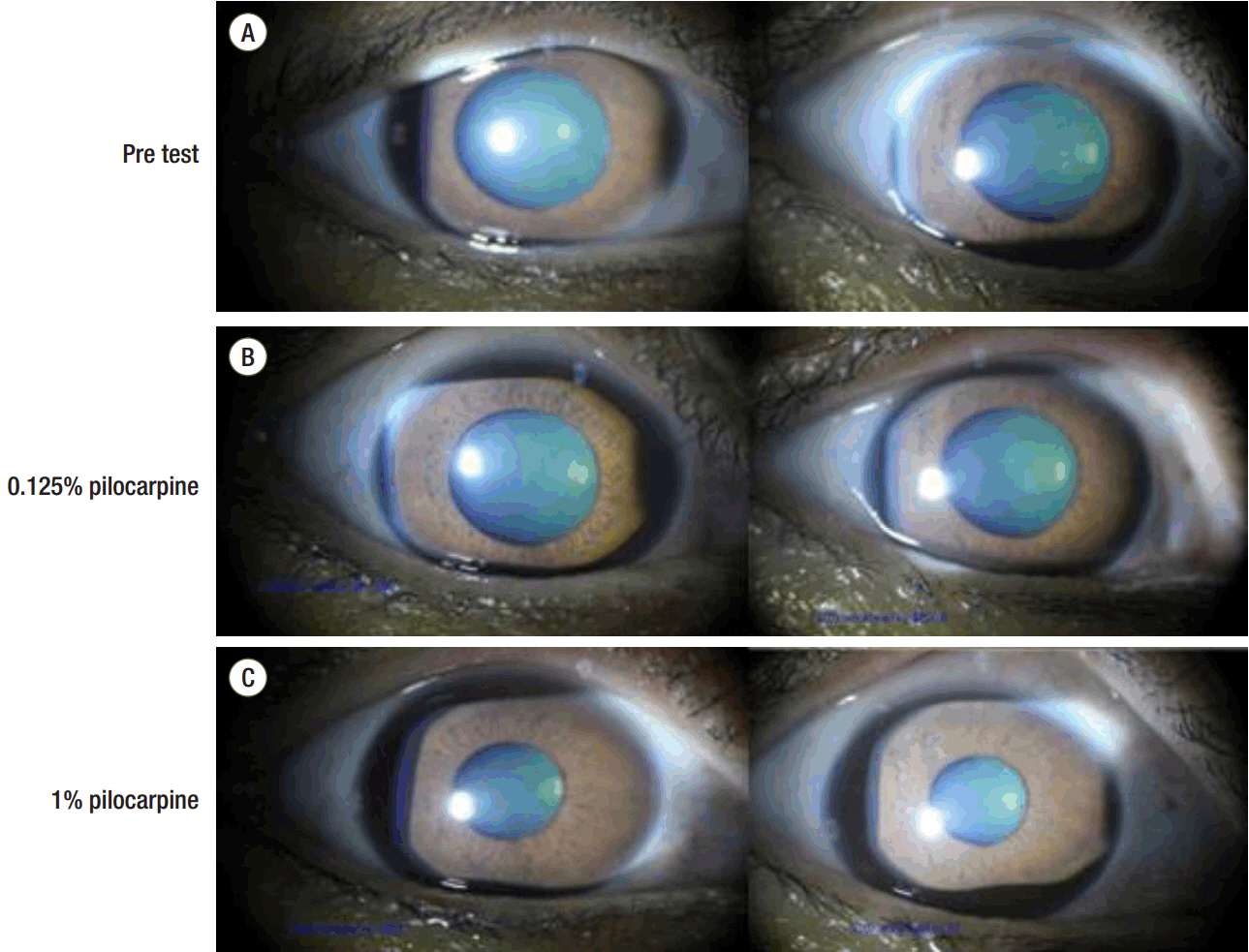Korean J Crit Care Med.
2015 Aug;30(3):191-195. 10.4266/kjccm.2015.30.3.191.
Fixed Pupillary Light Reflex due to Peripheral Neuropathy after Liver Transplantation
- Affiliations
-
- 1Department of Anesthesiology and Pain Medicine, Anesthesia and Pain Research Institute, Yonsei University College of Medicine, Seoul, Korea. anesjeongmin@yuhs.ac
- KMID: 2227648
- DOI: http://doi.org/10.4266/kjccm.2015.30.3.191
Abstract
- A 46-year-old female patient was admitted to the intensive care unit (ICU) after liver transplantation. About an hour later after the ICU admission, she had no pupillary light reflex. Both pupils were also fixed at 5 mm. Patients who undergo liver transplantation are susceptible to neurologic disorders including hepatic encephalopathy, thromboembolism and intracranial hemorrhage. Abnormal pupillary light reflex usually indicates a serious neurologic emergency in these patients; however, benign neurologic disorders such as peripheral autonomic neuropathy or Holmes-Adie syndrome should also be considered. We experienced a case of fixed pupillary light reflex after liver transplantation diagnosed as peripheral autonomic neuropathy.
MeSH Terms
Figure
Reference
-
References
1. Bremner FD, Smith SE. Bilateral tonic pupils: Holmes Adie syndrome or generalised neuropathy? Br J Ophthalmol. 2007; 91:1620–3.2. Martinelli P. Holmes-Adie syndrome. Lancet. 2000; 356:1760–1.
Article3. Chaudhry V, Corse AM, O’Brian R, Cornblath DR, Klein AS, Thuluvath PJ. Autonomic and peripheral (sensorimotor) neuropathy in chronic liver disease: a clinical and electrophysiologic study. Hepatology. 1999; 29:1698–703.
Article4. Knill-Jones RP, Goodwill CJ, Dayan AD, Williams R. Peripheral neuropathy in chronic liver disease: clinical, electrodiagnostic, and nerve biopsy findings. J Neurol Neurosurg Psychiatry. 1972; 35:22–30.
Article5. Seneviratne KN, Peiris OA. Peripheral nerve function in chronic liver disease. J Neurol Neurosurg Psychiatry. 1970; 33:609–14.
Article6. McDougall AJ, Davies L, McCaughan GW. Autonomic and peripheral neuropathy in endstage liver disease and following liver transplantation. Muscle Nerve. 2003; 28:595–600.
Article7. Dyck PJ, Albers JW, Andersen H, Arezzo JC, Biessels GJ, Bril V, et al. Diabetic polyneuropathies: update on research definition, diagnostic criteria and estimation of severity. Diabetes Metab Res Rev. 2011; 27:620–8.
Article8. Callaghan BC, Cheng HT, Stables CL, Smith AL, Feldman EL. Diabetic neuropathy: clinical manifestations and current treatments. Lancet Neurol. 2012; 11:521–34.
Article9. Zenker J, Ziegler D, Chrast R. Novel pathogenic pathways in diabetic neuropathy. Trends Neurosci. 2013; 36:439–49.
Article10. Thomas PK. Classification, differential diagnosis, and staging of diabetic peripheral neuropathy. Diabetes. 1997; 46 Suppl 2:S54–7.
Article11. Dyck PJ, Kratz KM, Karnes JL, Litchy WJ, Klein R, Pach JM, et al. The prevalence by staged severity of various types of diabetic neuropathy, retinopathy, and nephropathy in a population-based cohort: the Rochester Diabetic Neuropathy Study. Neurology. 1993; 43:817–24.
Article12. Adie WJ. Pseudo-Argyll Robertson pupils with absent tendon reflexes: a benign disorder simulating tabes dorsalis. Br Med J. 1931; 1:928–30.
Article13. Thompson HS. Segmental palsy of the iris sphincter in Adie’s syndrome. Arch Ophthalmol. 1978; 96:1615–20.
Article14. Ulrich J. Morphological basis of Adie’s syndrome. Eur Neurol. 1980; 19:390–5.
Article15. Baloh RW, Jen J. Neuro-ophthalmology. Goldman’s Cecil medicine. 24th ed. In : Goldman L, editor. Philadelphia: Elsevier/Saunders;2012. p. 2445–6.16. Harriman DG, Garland H. The pathology of Adie’s syndrome. Brain. 1968; 91:401–18.
Article17. del Valle Loarte M, Garcia Ruiz PJ. A new clinical sign in Holmes-Adie syndrome. J Neurol. 2009; 256:127–8.
Article18. Wirtschafter JD, Volk CR, Sawchuk RJ. Transaqueous diffusion of acetylcholine to denervated iris sphincter muscle: a mechanism for the tonic pupil syndrome (Adie syndrome). Ann Neurol. 1978; 4:1–5.
Article19. Thompson HS. Adie’s syndrome: some new observations. Trans Am Ophthalmol Soc. 1977; 75:587–626.20. Bremner F, Smith S. Pupil findings in a consecutive series of 150 patients with generalised autonomic neuropathy. J Neurol Neurosurg Psychiatry. 2006; 77:1163–8.
Article
- Full Text Links
- Actions
-
Cited
- CITED
-
- Close
- Share
- Similar articles
-
- Pupillary Response Time and Pupillary Area in Korean
- Quantitative Pupillometry of the Pupillary Light Reflex in Koreans
- A Relative Afferent Pupillary Defect in the Contralateral Eye of a Unilateral Cataract
- Diagnostic Value of Tendon Reflex in Diabetic Peripheral Neuropathy
- Nerve Conduction Study on Patients with Severe Liver Disease and Its Change after Transplantation



